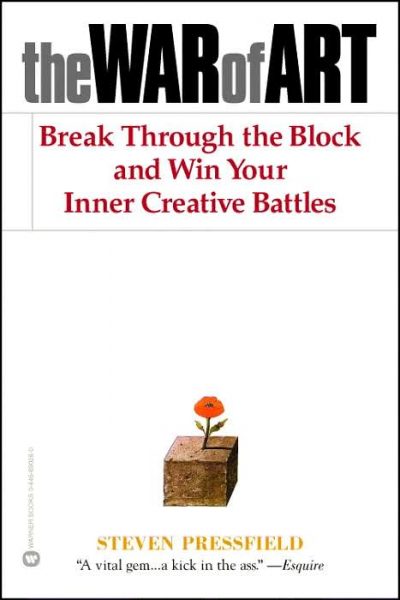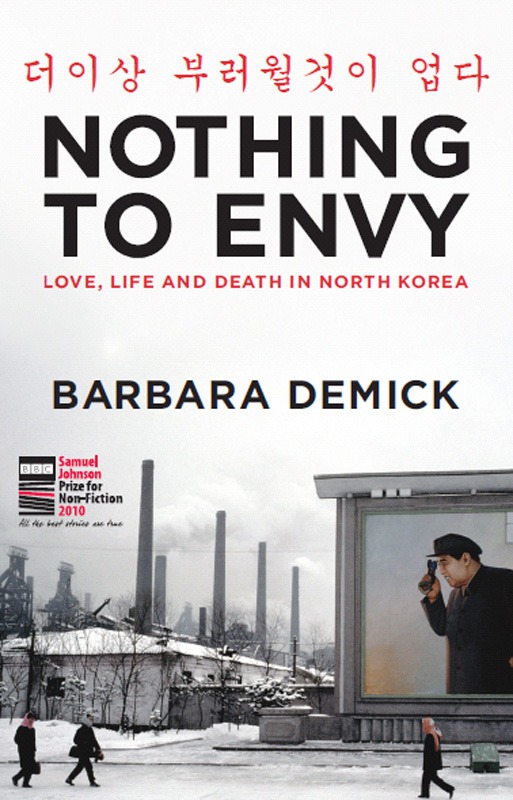The War of Art

The War of Art is about how creative professionals like artists and entrepreneurs overcome obstacles to complete meaningful work. It’s authored by Steven Pressfield, who also wrote another similar book on this subject called Do the Work, which also describes the same challenges in equally imaginative terms. They aren’t sober books on how to work as much as they are vivid characterizations of how we sabotage ourselves.
One of key ideas of this book is the principle of “Resistence”, which Pressfield defines as what keeps us from sitting down and committing to the work we have to do.
“Resistance is the most toxic force on the planet. It is the root of more unhappiness than poverty, disease, and erectile dysfunction. To yield to Resistance deforms our spirit. It stunts us and makes us less than we are and were born to be.”
This book is deeply encouraging. It’s a strong reminder that we do matters a great deal.
Favorite Passages
“Are you a born writer? Were you put on earth to be a painter, a scientist, an apostle of peace? In the end the question can only be answered by action. Do it or don’t do it. It may help to think of it this way. If you were meant to cure cancer or write a symphony or crack cold fusion and you don’t do it, you not only hurt yourself, even destroy yourself. You hurt your children. You hurt me. You hurt the planet. You shame the angels who watch over you and you spite the Almighty, who created you and only you with your unique gifts, for the sole purpose of nudging the human race one millimeter farther along its path back to God. Creative work is not a selfish act or a bid for attention on the part of the actor. It’s a gift to the world and every being in it. Don’t cheat us of your contribution. Give us what you’ve got.”
“The artist cannot look to others to validate his efforts or his calling. If you don’t believe me, ask Van Gogh, who produced masterpiece after masterpiece and never found a buyer in his whole life. The artist must operate territorially. He must do his work for its own sake.”
“The moment a person learns he’s got terminal cancer, a profound shift takes place in his psyche. At one stroke in the doctor’s office he becomes aware of what really matters to him. Things that sixty seconds earlier had seemed all- important suddenly appear meaningless, while people and concerns that he had till then dismissed at once take on supreme importance.”
“I have learned a deep respect for one of Goethe’s couplets: “Whatever you can do, or dream you can, begin it. Boldness has genius, magic, and power in it. Begin it now.”
“Marines love to be miserable. Marines derive a perverse satisfaction from having colder chow, crappier equipment, and higher casualty rates than any outfit of dogfaces, swab jockeys or flyboys, all of whom they despise. Why? Because these candy-asses don’t know how to be miserable. The artist committing himself to his calling has volunteered for hell, whether he knows it or not. He will be dining for the duration on a diet of isolation, rejection, self-doubt, despair, ridicule, contempt, and humiliation. The artist must be like that Marine. He has to know how to be miserable. He has to love being miserable. He has to take pride in being more miserable than any soldier or swabbie or jet jockey. Because this is war, baby. And war is hell.”
Closing Thoughts
This book is fantastic and easy to recommend to anyone who has struggled with creative or professional obstacles (that’s everyone, right?). At under 200 pages, it’s not a long read, although if you’re looking for something even shorter, Do the Work is by the same author and is also very good. If you’re going to just read one, stick with The War of Art.
Rating:



